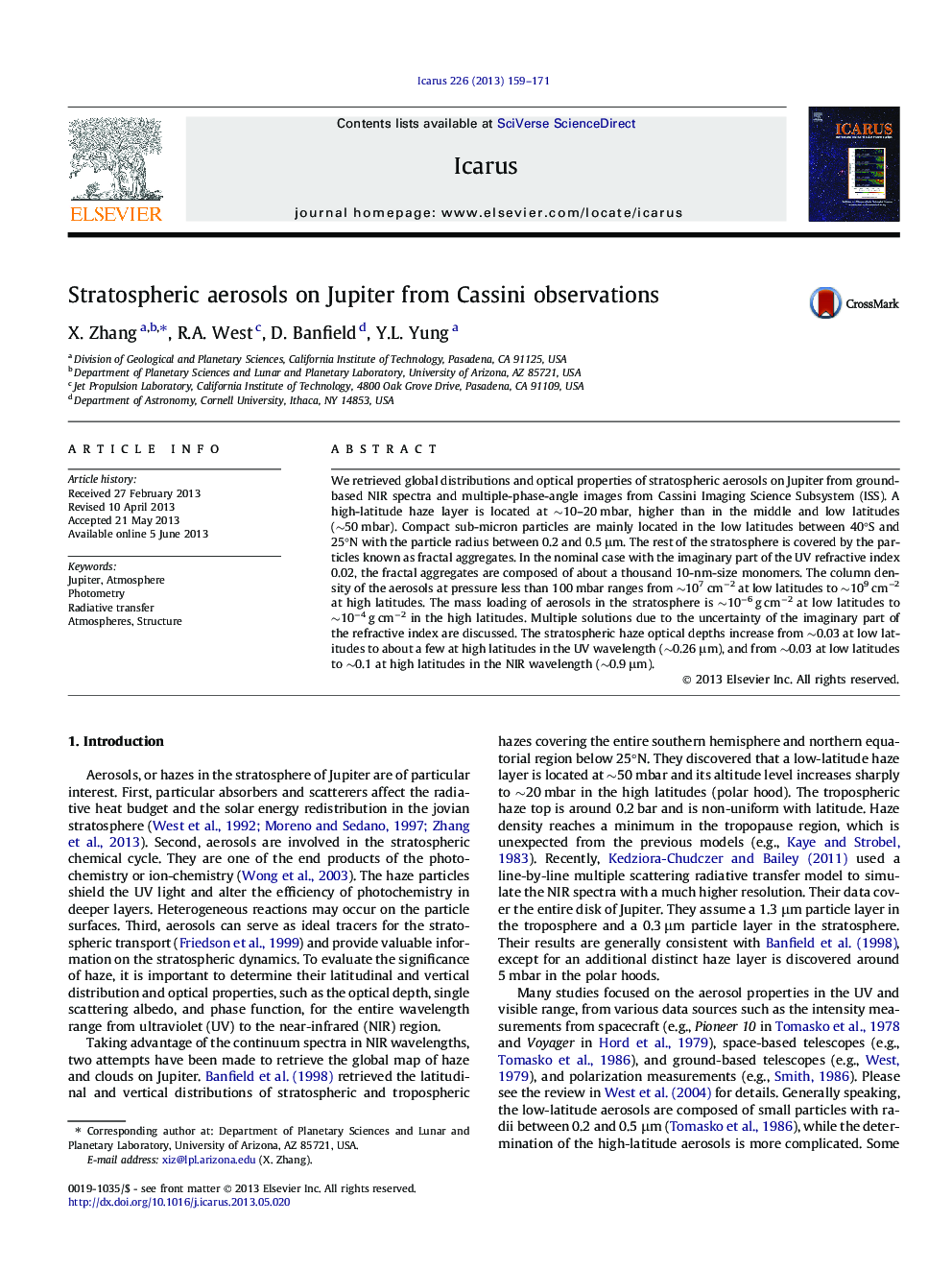| Article ID | Journal | Published Year | Pages | File Type |
|---|---|---|---|---|
| 10701292 | Icarus | 2013 | 13 Pages |
Abstract
We retrieved global distributions and optical properties of stratospheric aerosols on Jupiter from ground-based NIR spectra and multiple-phase-angle images from Cassini Imaging Science Subsystem (ISS). A high-latitude haze layer is located at â¼10-20 mbar, higher than in the middle and low latitudes (â¼50 mbar). Compact sub-micron particles are mainly located in the low latitudes between 40°S and 25°N with the particle radius between 0.2 and 0.5 μm. The rest of the stratosphere is covered by the particles known as fractal aggregates. In the nominal case with the imaginary part of the UV refractive index 0.02, the fractal aggregates are composed of about a thousand 10-nm-size monomers. The column density of the aerosols at pressure less than 100 mbar ranges from â¼107 cmâ2 at low latitudes to â¼109 cmâ2 at high latitudes. The mass loading of aerosols in the stratosphere is â¼10â6 g cmâ2 at low latitudes to â¼10â4 g cmâ2 in the high latitudes. Multiple solutions due to the uncertainty of the imaginary part of the refractive index are discussed. The stratospheric haze optical depths increase from â¼0.03 at low latitudes to about a few at high latitudes in the UV wavelength (â¼0.26 μm), and from â¼0.03 at low latitudes to â¼0.1 at high latitudes in the NIR wavelength (â¼0.9 μm).
Related Topics
Physical Sciences and Engineering
Earth and Planetary Sciences
Space and Planetary Science
Authors
X. Zhang, R.A. West, D. Banfield, Y.L. Yung,
